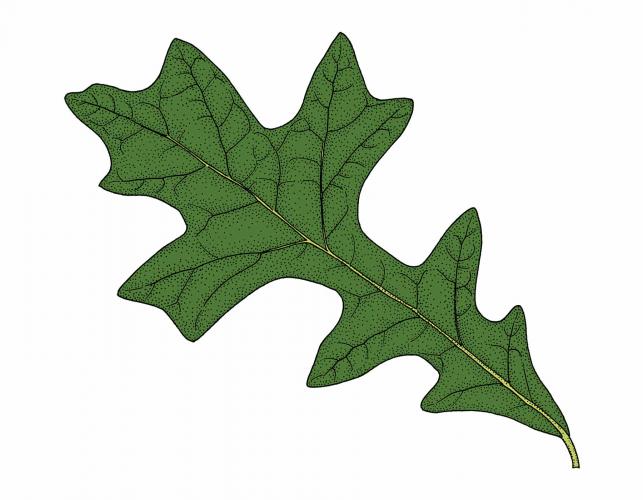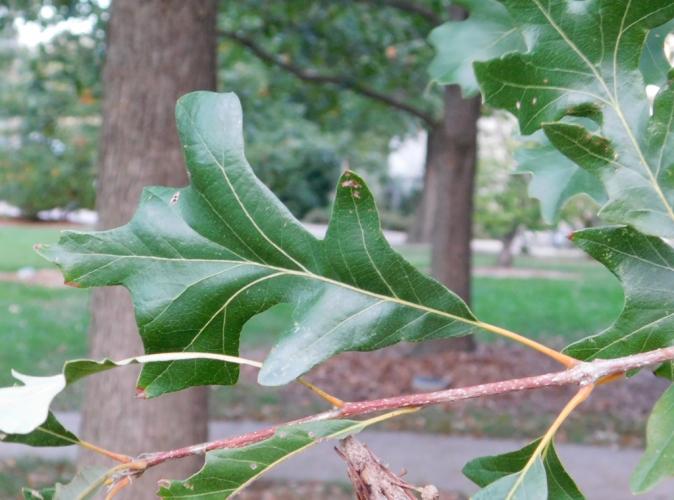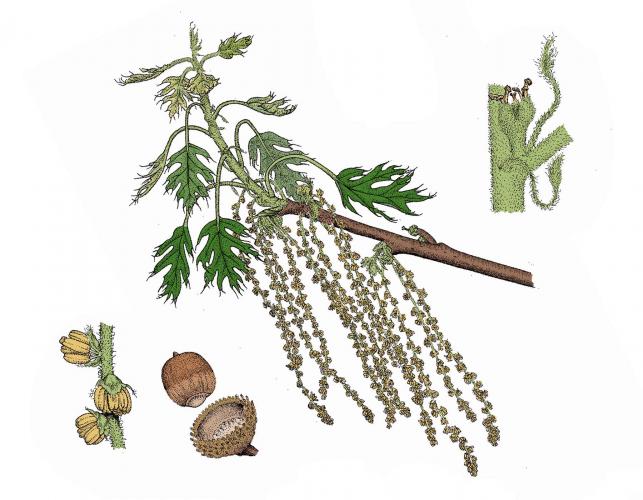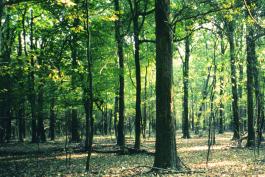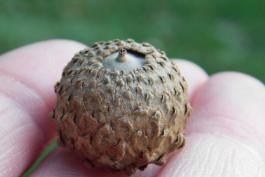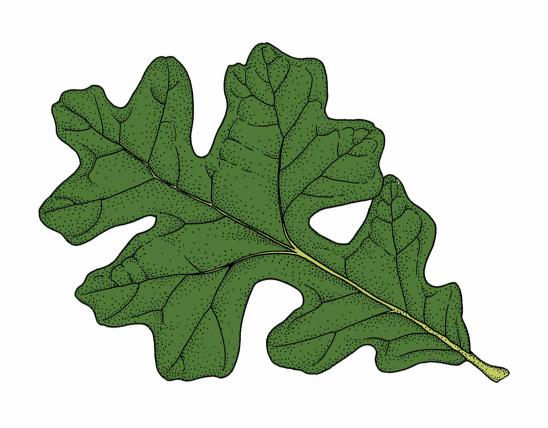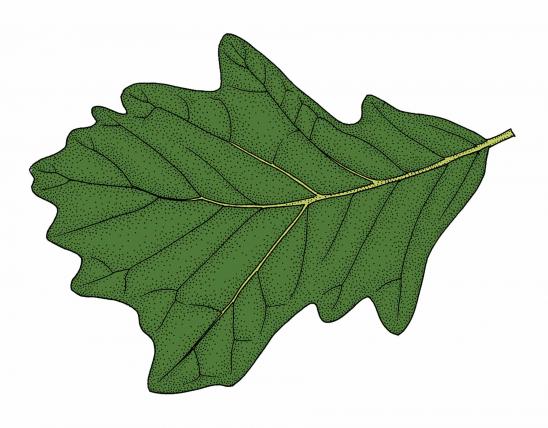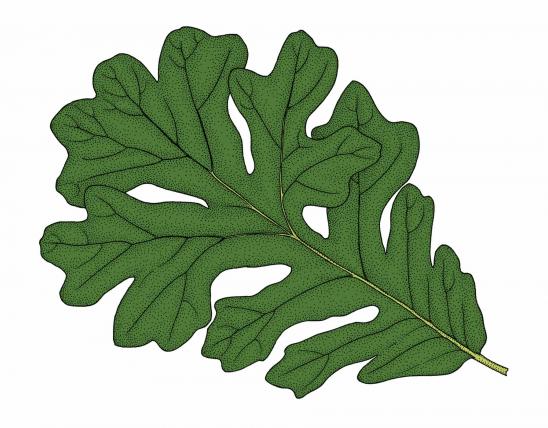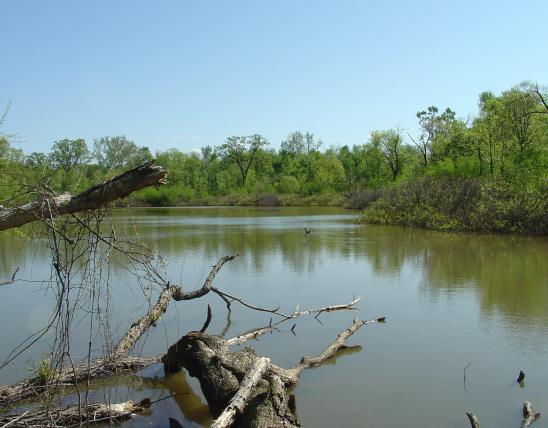
Overcup oak is a medium-sized tree with an irregular crown, twisted branches, and a swollen base when growing along the edges of swamps.
Leaves alternate, simple, 3–10 inches long, narrow but broadest above the middle, with 5–9 rounded lobes, middle lobes usually widest, often squarish, notch of lobes with various shapes, leaf tip rounded to pointed; leaves dark green and shiny above; light green and hairy beneath; turning yellow, brown, or reddish in autumn.
Bark brownish-gray and rough, with large, irregular plates or ridges.
Twigs slender, angled (not circular in cross-section); green and hairy at first, becoming gray-brown and smooth with age.
Flowers April–May, in catkins.
Fruits September–October; acorns solitary or paired; nut light brown, globe-shaped, to 1 inch tall, more than ½ inch wide; cup deep, lacking fringes, nearly enclosing the entire nut; scales sometimes warty and ragged toward the tip, otherwise flattened. Seeds edible; acorns ripen the autumn of the first year.

Habitat and Conservation
Human Connections
Ecosystem Connections
